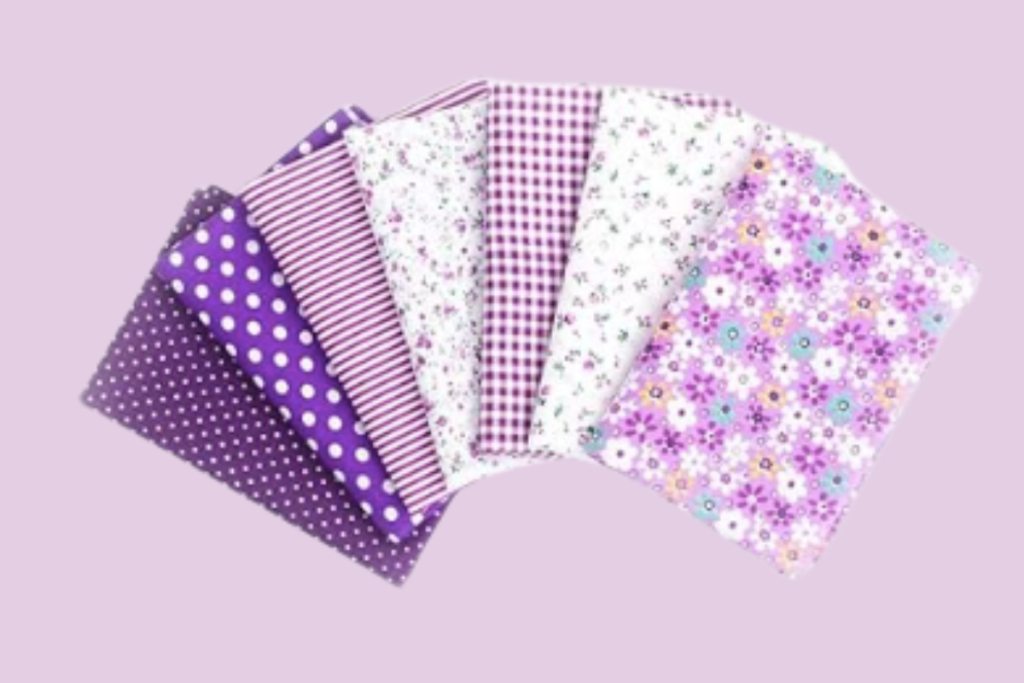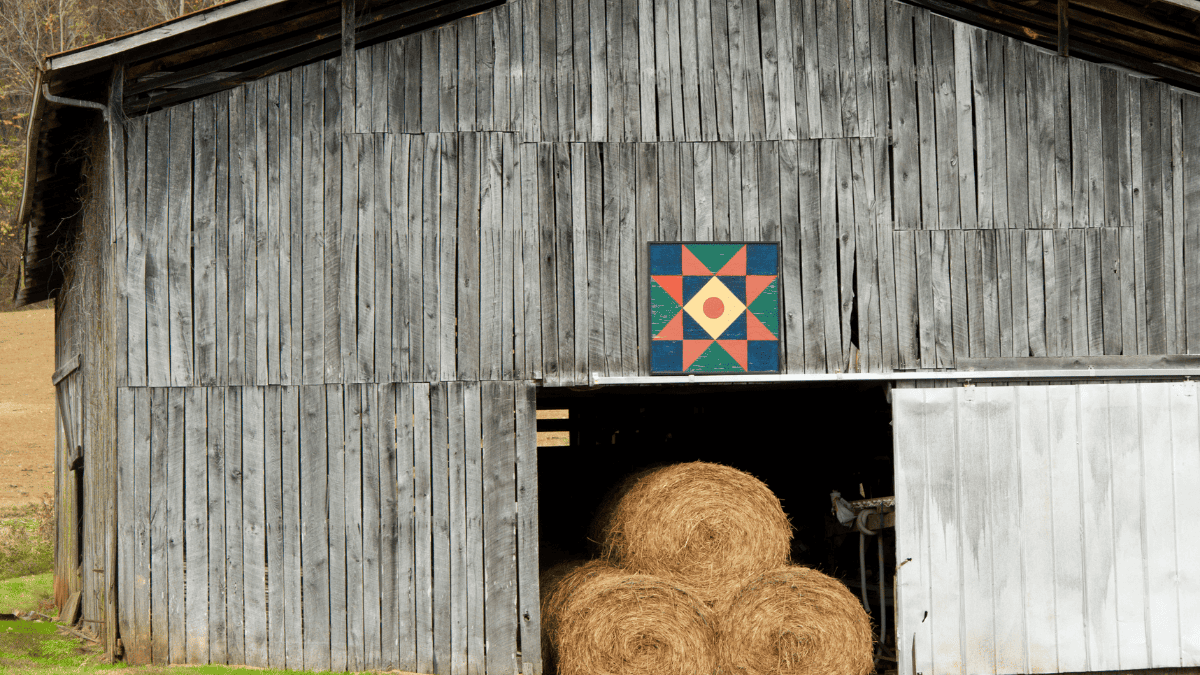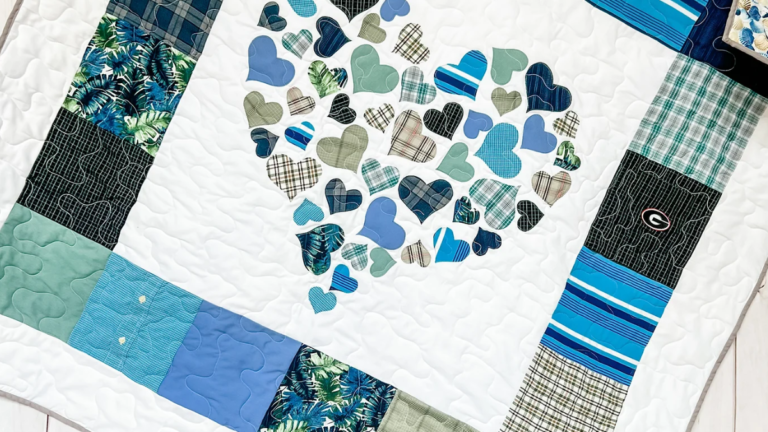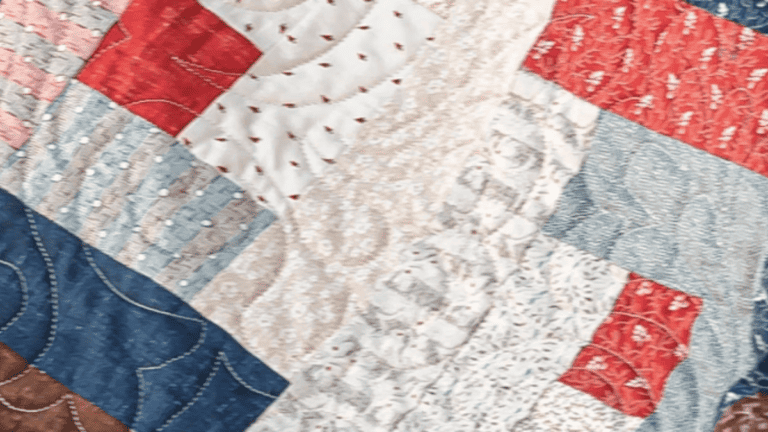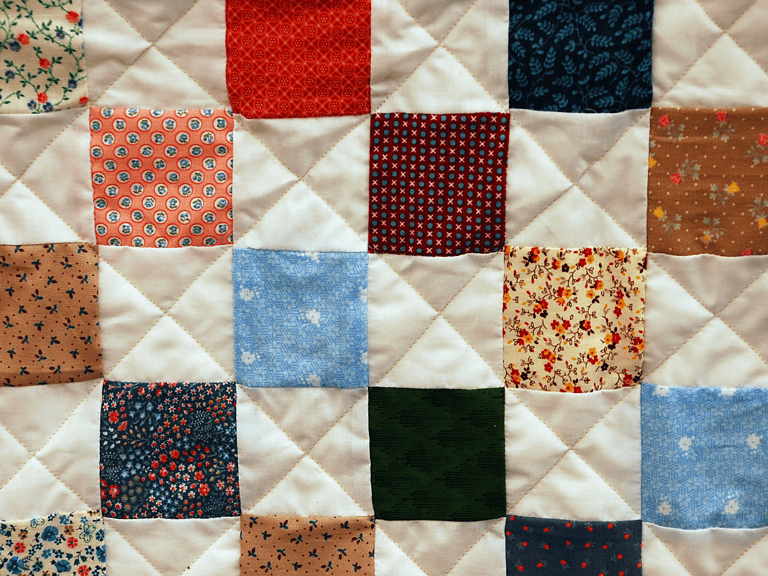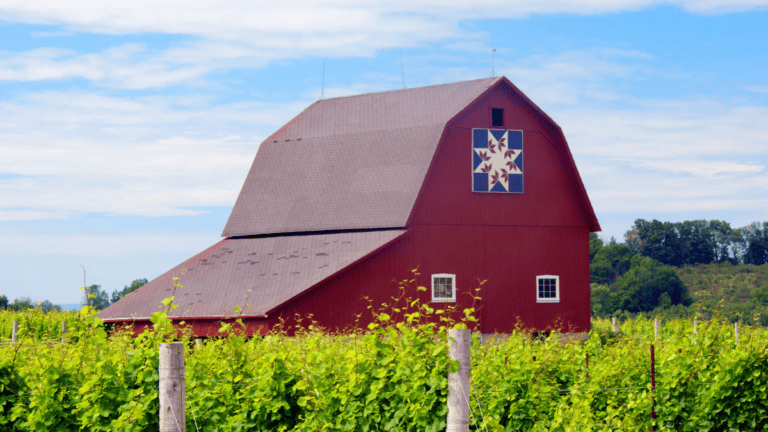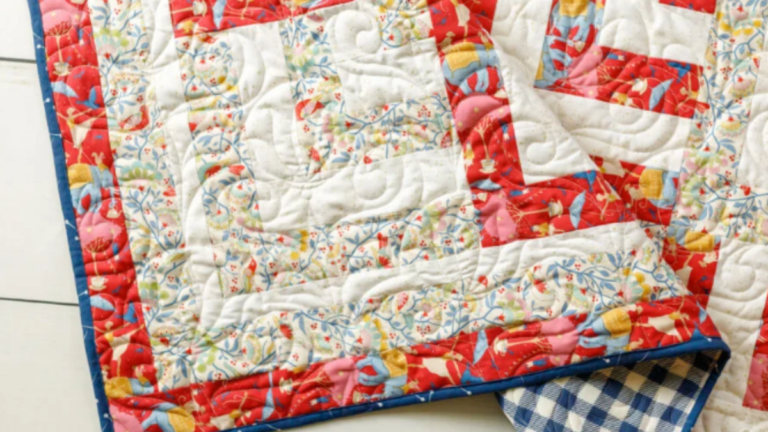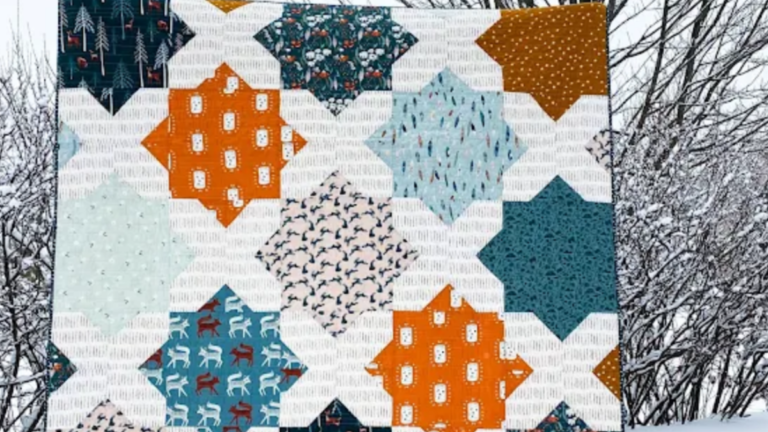Barn Quilt History and How To Make Your Own Easy And Beautiful Quilt
Barn quilts are large, hand-painted wooden blocks typically displayed on the exterior of barns, outbuildings, or other rural structures.
These vibrant panels bring a splash of color and artistry to the countryside, reflecting both personal expression and communal values.
As a form of folk art, barn quilts have a strong connection to rural life and often serve as a canvas to tell stories: commemorating family traditions, local history, or agricultural heritage.
The tradition of barn quilts began not so long ago, sprouting up as an innovative way to celebrate and revitalize the love for the time-honored craft of quilting.
Each square mimics a quilt block pattern, transformed from fabric swatches to large-scale murals. As you drive through rolling farmlands, you’re invited into an outdoor gallery where every barn quilt reveals a piece of a larger, interconnected tapestry of local identity and culture.
Creating a barn quilt is a creative process that brings families and communities together, often passed down as a cherished art form.
They serve as beacons of tradition and are tokens of the enduring spirit of the areas in which they reside.
As much as they are individual statements, barn quilts also stitch together the fabric of rural areas, uniting neighbors in a shared appreciation for their collective artistic legacy.
History of a Barn Quilt
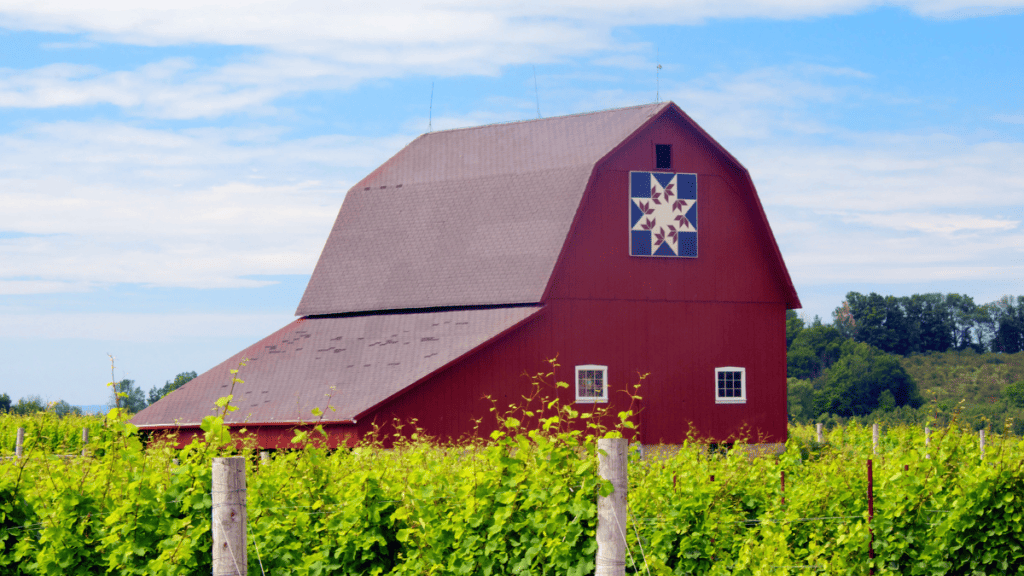
Barn quilts are a colorful and charming part of rural America, uniting communities with art and history.
This movement, which began modestly, has grown into a nationwide phenomenon celebrating regional heritage through public art.
Donna Sue Groves
Donna Sue Groves kick-started the barn quilt movement to honor her mother, a noted quilter. She painted a quilt square on her family’s barn in Adams County, Ohio.
Her personal tribute sparked a grassroots public art movement that quickly spread, both in Ohio and across the United States.
First Barn Quilt Trail
The Adams County Quilt Trail became the first barn quilt trail in 2001, owing to the collaborative efforts of Groves and the Ohio Arts Council.
This trail set a precedent, and soon other communities began creating their own versions to showcase local culture and artistry within a rich, historical framework.
Regional Heritage
Barn quilts highlight various communities’ regional heritage and have become symbols of local pride and tradition.
From old barns to community centers, these quilt squares often reflect geographic and historical significance uniquely tethered to the area.
In recent years, the spread of barn quilts has transformed them from quaint regional peculiarities to a unifying symbol of American rural identity.
Creating Your Own Barn Quilt
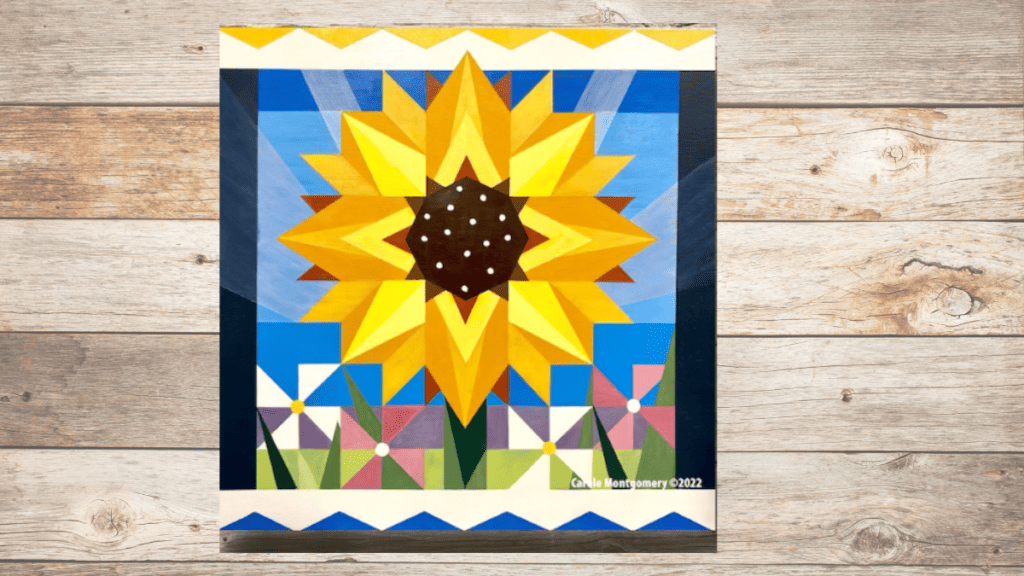
Creating a barn quilt is a rewarding DIY project that adds charm to your barn or home.
You’ll need patience and a steady hand, but by choosing a meaningful design and using the right materials and paints, you can create a beautiful and lasting piece of art.
Choosing a Quilt Design
Start by selecting a quilt block design that resonates with you. Traditional quilt patterns, such as the ‘Ohio Star’ or ‘Log Cabin,’ are popular choices.
Browse quilt squares and quilt block designs online or at your local library for inspiration.
Consider the meaning behind the patterns, as many traditional designs have significant historical or cultural stories attached to them.
Here are some of our favorite patterns: Start with Easy Barn Quilt patterns or Free barn quilt patterns
Preparing Materials
Your base material will be a wood frame, which you can either make or purchase pre-made from a hardware store, like Home Depot.
Ensure that the wood is smooth and free from any splinters. For a standard barn quilt, use a square piece of wood – 2×2, 4×4, or 8×8 feet are common sizes.
- Materials Needed:
- See all the supplies you need for Barn Quilt
Tip: Use higher-grade plywood for better durability, especially if the quilt will be displayed outdoors.
Painting Process
Before you start painting, apply a coat of primer to the wood to ensure the paint adheres properly. Once the primer is dry, lightly sand the surface for a smooth canvas. Now, you’re ready to transfer your quilt design onto the board.
Here’s how:
- Sketch Your Design: Use a pencil and a ruler to draw your design onto the primed wood.
- Tape It Up: Apply painters tape along the edges of your design to create sharp lines.
- Paint: Choose latex paint for its suitability for outdoor use. Start with lighter colors and apply coats as needed, allowing paint to dry between coats. For best results, consider applying two to three coats of paint.
- Seal It: After the paint is fully dry, apply a clear sealant to protect your barn quilt from the elements.
Bold colors can make your barn quilt stand out, and high-contrast patterns tend to draw the eye even from a distance. Take your time with each step to ensure a clean and vibrant finish.
Barn Quilt Patterns and Meanings
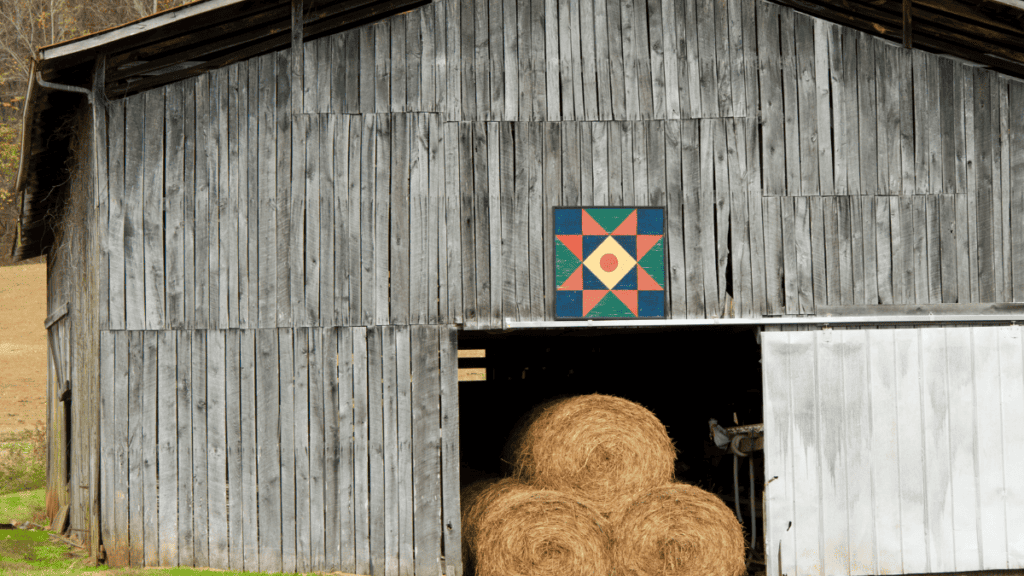
Barn quilt patterns carry a special blend of artistry and heritage, where each design might be tied to a family tradition or regional culture. Not just for aesthetics, these patterns can also be rich in symbolism.
Traditional Patterns
Amish Barn Quilts: These are known for their simple, yet precise patterns. You’ll often see quilt squares featuring black stars set against a solid background—each point a symbol of guidance through life’s complexities.
- Copper Flowers: Representing prosperity and beauty, designs with copper-colored florals often find themselves on barns to bring forth a sense of growth to the homestead.
- Red Flowers: Viewed as a token of love and strength, red flowers in barn quilt patterns are common and might harken back to a family’s loving roots.
Symbolic Designs
Quilt Squares: Each square of a barn quilt often tells a story or conveys a belief. The patterns within—whether geometric, botanical, or celestial—are symbolic language in their own right.
- Yellow Flowers: These usually signify happiness and friendship, a sunny addition that brightens the facade of a barn.
- Black Stars: They’re not just part of traditional patterns; they often carry meanings of protection and guidance for the occupants of the land.
When you create your own barn quilt, you’re not just partaking in a craft; you’re adding to a legacy, a visual dialogue that can continue well past your own era.
Barn Quilts Today
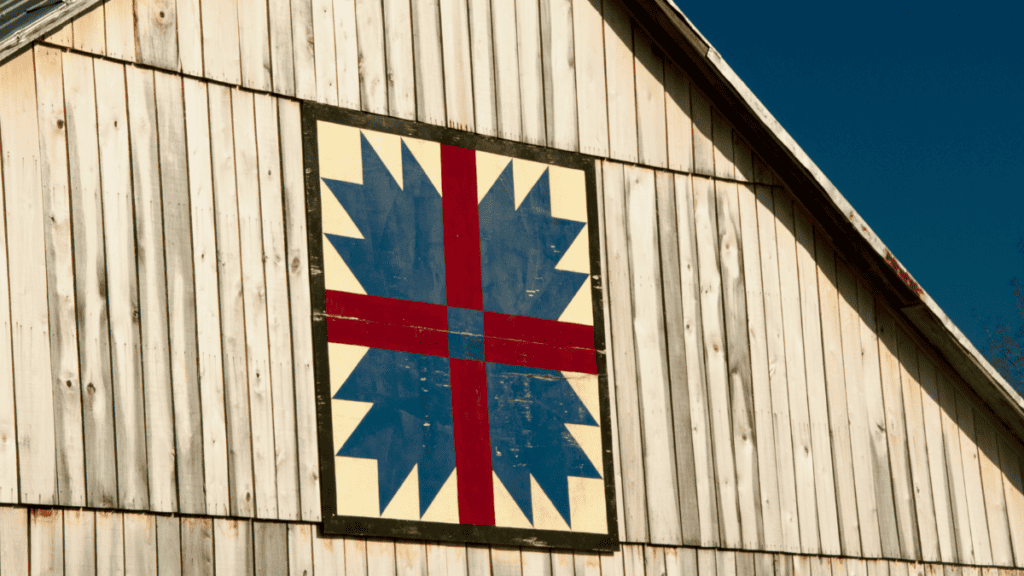
Barn Quilts have surged in popularity, becoming more than simple decoration; they’re a celebration of heritage and a boon to local economies, spurring tourism and creativity.
Community and Culture
You’ll often find barn quilts adorning the sides of barns in rural communities and small towns, but they’re more than just decorations.
Each quilt square tells a story, representing the history, family heritage, or agricultural pride of the area.
For instance, the Chatt Hills Barn Quilt Trail showcases the character of each farm, connecting neighbors and strengthening community ties.
Economic Impact
- Barn Quilt Tours: By drawing visitors, barn quilt tours stimulate local economies.
- Tourism: Small towns benefit as tourists come to follow the colorful trails.
- Local Farmers: Often doubling as bed and breakfast hosts, farmers offer a unique experience that combines rural charm with artistic flair.
Artistic Expression
A single barn quilt can be a canvas for personal expression. They are a form of artistic outlet that illustrates the individuality of each creator.
This practice allows for an eclectic array of designs, often inspired by traditional quilting patterns but reinterpreted in large scale and vivid colors.
Barn quilts thus become landmarks of artistic expression in their own right, inspiring both locals and visitors with their beauty and complexity.
How to Visit Barn Quilt Trails
Exploring barn quilt trails is an enriching way to discover the countryside’s charm. These colorful patterns on barns not only add beauty to rural areas but often reflect local heritage and stories.
Planning a Road Trip
To make the most of your trip, detail out the route ahead of time. Check for barn quilt trails in the vicinity of small towns you’d like to visit. This allows you to discover new areas while chasing your favorite treasure: the unique patterns of each barn quilt. Keep in mind that the best times to see these artworks are during daylight hours, so plan your travel accordingly.
Map and Guides
Grab a map or a guidebook outlining the barn quilt trails. Often, local tourism offices or websites offer detailed guides that include the locations of the barn quilts.
Using a map not only provides a sense of direction but also enriches the journey as you locate each quilt. Some trails may have a thematic sequence, ensuring that you don’t miss out on any specially curated experiences.
- Official Barn Quilt Trail Guide
- Small Town Visitor Centers: they often have guidebooks.
- Websites: look for updated guides and printable maps.
- Travel Apps: for real-time navigation and quilt details.
Respecting Property
Though barn quilts are accessible treasures, it is imperative to respect private property. If a barn quilt catches your eye, remember:
- Do not trespass on private land to get a closer view.
- If enthusiastic about creating your own barn quilt, seek permission before attaching anything to a barn that isn’t yours.
- Always stay on public roads or trails; bring along a camera to capture the moment from a distance.
By following these guidelines, you’ll help ensure barn quilt trails continue to be a shared joy for both visitors and locals.
Displaying Barn Quilts
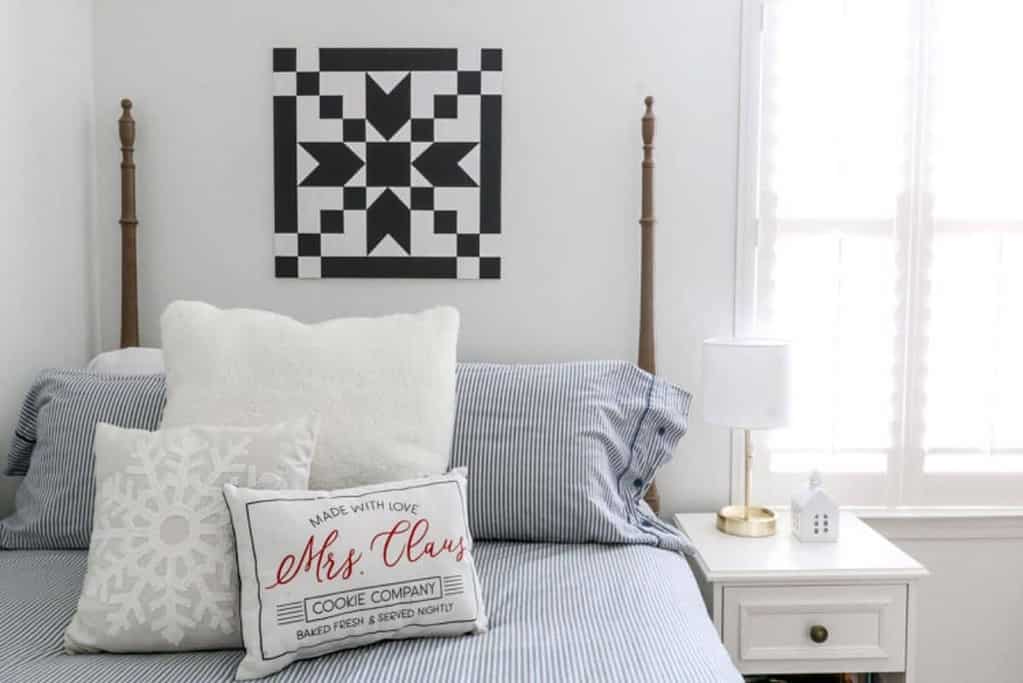
Barn quilts can transform a simple structure into a canvas of personal expression and community identity, whether it’s on an old barn in the countryside or as an artistic touch to your urban apartment.
On Rural Properties
In rural areas, your old barn can get a fresh lease on life with a painted quilt. The design you choose can reflect your family’s heritage or the crops you grow.
Here’s how you can go about it:
- Choose a Design: Select a pattern that means something to you or your community.
- Prepare the Surface: Make sure your barn’s side is clean and smooth.
- Seal and Paint: Use weather-resistant paints for your finished product to ensure it withstands the elements.
In Urban Spaces
You don’t need a farm to share in this tradition. Here’s how you can showcase a barn quilt in the city:
- Front Porch: Hang a smaller quilt square to welcome guests with a pop of color and pattern.
- Community Gardens: Collaborate with neighbors to display a barn quilt that celebrates urban community spirit.
As Home Decor
Barn quilits aren’t just for outdoor use. They can also make a striking statement inside your home:
- Create a Focal Point: Hang a barn quilt above your mantel or in the hallway for guests to admire.
- Complement Your Decor: Pick colors and patterns that match your interior aesthetic for a cohesive look.
Remember, displaying a barn quilt is a way to tell a story and connect with a wider community, whether you’re in the country or the city.
DIY Tips and Resources
Creating your own barn quilt can be a fulfilling project. Below you’ll find specific information to help you get started, from picking the right materials to finding helpful tutorials and local workshops.
Material Selection
When you’re choosing materials, your main components will be the wood frame and the paint. You’ll want to head to a hardware store like Home Depot to find a suitable wood frame.
Look for one that’s smooth, without knots, and is at least ¾ inch thick to ensure durability. As for paint, use exterior grade acrylic for the best longevity—it has a larger file size but it’s key to creating a finished product that resists weathering.
Consider adding back braces to your wood frame to prevent warping. For application precision, don’t forget to pick up some painters tape; it’s a game-changer for creating crisp lines.
- Wood Frame: ≥¾ inch thickness, knot-free
- Type of Paint: Exterior grade acrylic
- Additional Supplies: Back braces, painters tape
Tutorial Videos
There are many tutorial videos available online that offer step-by-step guidance. These videos are great for visual learners and often provide a supplementary “next step” guide after each major stage.
They typically detail file size requirements for design templates and the best techniques for applying painters tape. Keep in mind, following along can help you avoid common pitfalls and ensure your barn quilt looks professional.
- Visual learning: Follow detailed guidance
- Next steps: Explained after each stage
- Technique tips: Painters tape application
Community Workshops
Joining a community workshop could be a fantastic way for you to connect with others and get hands-on instruction. Check local listings or community boards for upcoming events.
They often provide materials, so you don’t have to worry about file sizes or forgetting your painters tape. Plus, workshops are a good opportunity to ask for specific hardware store recommendations or even get tips on creating a custom wood frame.
- Local workshops: Hands-on instruction
- Community connection: Meet fellow crafters
- Materials provided: No need to worry about supplies
Fabric Giveaway
Enter our monthly fabric giveaway. Simply complete the tasks daily and you will be entered into the drawing. Winner will be randomly drawn on the first day of the month and notified via email
